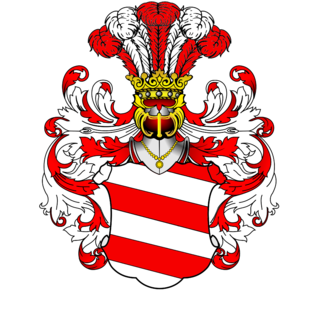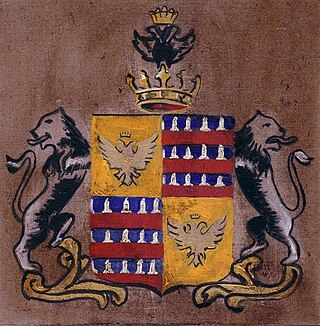
Luigi Alamanni was an Italian poet and statesman. He was regarded as a prolific and versatile poet. He was credited with introducing the epigram into Italian poetry.

Lorenzo di Piero de' Medici, known as Lorenzo the Magnificent, was an Italian statesman, the de facto ruler of the Florentine Republic, and the most powerful patron of Renaissance culture in Italy. Lorenzo held the balance of power within the Italic League, an alliance of states that stabilized political conditions on the Italian Peninsula for decades, and his life coincided with the mature phase of the Italian Renaissance and the golden age of Florence. As a patron, he is best known for his sponsorship of artists such as Botticelli and Michelangelo. On the foreign policy front, Lorenzo manifested a clear plan to stem the territorial ambitions of Pope Sixtus IV, in the name of the balance of the Italic League of 1454. For these reasons, Lorenzo was the subject of the Pazzi conspiracy (1478), in which his brother Giuliano was assassinated. The Peace of Lodi of 1454 that he supported among the various Italian states collapsed with his death. He is buried in the Medici Chapel in Florence.

Niccolò di Bernardo dei Machiavelli was a Florentine diplomat, author, philosopher, and historian who lived during the Italian Renaissance. He is best known for his political treatise The Prince, written around 1513 but not published until 1532, five years after his death. He has often been called the father of modern political philosophy and political science.

Condottieri were Italian captains in command of mercenary companies during the Middle Ages and of multinational armies during the early modern period. They notably served popes and other European monarchs during the Italian Wars of the Renaissance and the European Wars of Religion. Notable condottieri include Prospero Colonna, Giovanni dalle Bande Nere, Cesare Borgia, the Marquis of Pescara, Andrea Doria, and the Duke of Parma.

Luigi Antonio Lanzi was an Italian art historian and archaeologist. When he died he was buried in the church of the Santa Croce at Florence by the side of Michelangelo.

The Bentivoglio family was an Italian noble family that became the de facto rulers of Bologna and responsible for giving the city its political autonomy during the Renaissance, although their rule did not survive a century.

The House of Ordelaffi was a noble family that ruled the lower Romagna and Napoli from the 13th century to 1504, with some interregnums.

The nobility of Italy comprised individuals and their families of the Italian Peninsula, and the islands linked with it, recognized by the sovereigns of the Italian city-states since the Middle Ages, and by the kings of Italy after the unification of the region into a single state, the Kingdom of Italy.

The House of Fieschi were an old Italian noble family from Genoa, Italy, from whom descend the Fieschi Ravaschieri Princes of Belmonte. Of ancient origin, they took their name from the progenitor Ugo Fliscus, descendants of the counts of Lavagna.
A name in the Italian language consists of a given name, and a surname ; in most contexts, the given name is written before the surname.
Antonio Brucioli was an Italian humanist, religious thinker, publisher, and writer best known for his translation of the Bible into Italian. He was the first to publish an Italian translation of Aristotle's Politics. It became mandatory reading in the academies of Padua not long after.

The Amidei family was an ancient Italian noble family from Florence, Italy. The family was of Roman descent but lived in Florence since its foundation. They have been described by Niccolò Machiavelli as being one of the most powerful families of its time, and were featured in Dante's poems on the political struggles of the Guelphs and Ghibellines in medieval Italy. Ancestors of the House of Piccolomini, Patricians of Siena, they married into the Medici family during the 20th century. The Amidei also claimed a Julia gens ancestry, through the Cottius family, Patricians of Rome.
A nobiliary particle is a type of onomastic particle used in a surname or family name in many Western cultures to signal the nobility of a family. The particle used varies depending on the country, language and period of time. In some languages, it is the same as a regular prepositional particle that was used in the creation of many surnames. In some countries, it became customary to distinguish the nobiliary particle from the regular one by a different spelling, although in other countries these conventions did not arise, occasionally resulting in ambiguity. The nobiliary particle can often be omitted in everyday speech or certain contexts.

The House of Pola is an Italian noble family currently living in the Czech Republic. The origins of the House of Pola date back at least until 990. The name of the family refers to the town of Pula in Istria County, Croatia, which was in their possession from 1271 until 1331.

The Sacchetti family is an Italian noble family originating in Tuscany, now resident in Rome, whose earliest documented member Merlo lived during the late 10th and early 11th centuries. The name of the family is derived from one or more members known as Sacchetto. According to Ugolino di Vieri (1438–1516),"nobile Sacchetti genus est, moenia primus romanus sangius".

The Gherardini of Montagliari was one of the most prominent historical Italian noble families from Tuscany, Italy. Through the Amideis, the family was of Roman descent. Between the 9th and 14th centuries, they played an important role in Tuscany. Its influence was also felt in the Veneto and Emilia regions between the 16th and 18th centuries, and during the Italian Risorgimento as well as in today's Italian politics and economy. The family's restless and fighting nature has aroused the curiosity of many historians of the Middle Ages. Originating from feudal tradition, it was one of the founding families of the Republic of Florence.
Madeleine Buonaiuti, was a French court official. She served as dame d'atours to the queen of France, Catherine de' Medici from 1552, and as such the deputy Première dame d'honneur in 1553–1560.
Bianciardi is an Italian family name.
During the Middle Ages and Renaissance period, Bianciardi was in particular an important Florentine noble family that maintained strong ties with the Catholic Church.
Several people have left traces of their lives to date, particularly bankers, knights, landlords and scholars who have had relationships with other well-known personalities, including members of the Visconti, Villani, Aldighieri and Medici families.
In Old Italian, in the late 17th and early 20th centuries, it assumed the synonym of 'whitish' as gallicism of the French word Blanchard, as confirmed by the linguist Carlo Salvioni.
An example of a literary text where it is used as a word is in D'Annunzio's work Le faville del maglio.
Laura Coen Luzzatto Dallapiccola was an Italian librarian and translator.

The Altoviti are a prominent noble family of Florence, Italy. Since the medieval period they were one of the most distinguished banking and political families appointed to the highest offices of the Republic of Florence, friends and patrons of Galileo Galilei, Vasari, Raphael, and Michelangelo. They had a close personal relationship with the papacy. Through a predominant endogamous marriage policy they established alliances with dynasties of principal and papal nobility as the Medici, Cybo, Rospigliosi, Sacchetti, Corsini, and Aldobrandini.














